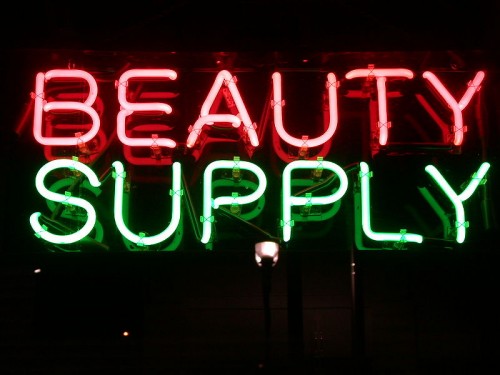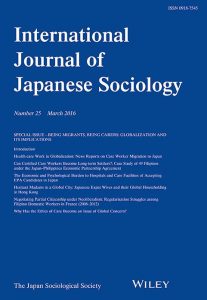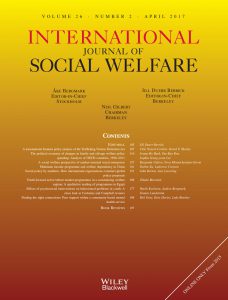When critiquing harmful beauty practices becomes an ahistorical media spectacle: A reading of Jessica Simpson's "The Price of Beauty"
In what appears to be a inauthentic contrast to its current menu of celebrity reality programming, VH1 has begun airing a program titled Jessica Simpson’s The Price of Beauty, which is summarized by Simpson in the following statement from the beginning sequence of the program: “I’m going to travel the world and see what makes a woman from different cultures feel beautiful.” Simpson, the singer-turned-reality show star who has been recently ostracized by media outlets for relationship drama and weight gain, is joined by two “friends” that assist her in an exploratory exercise that takes her to such places as Thailand, New Zealand and France. Some phrases that she offers in the opening of the program include: ““I wanted to sit with people and listen to what their definition of beauty is,” and, “I want to see the lengths that women go through to make them feel beautiful in their environment.” While the title of the show, The Price of Beauty, seems to embody a critical stance similar to a Media Education Foundation-style assault on harmful beauty practices, the message of the program seems to be less direct and more mixed, with apolitical, and ahistorical tendencies. In a particularly revealing cultural moment, Simpson remarks: “I thought Thai massages came with happy endings, I was just wondering where mine was.”
Rather than critique the embarrassing behavior of Simpson and her companions (laughing during Buddhist meditation, wearing extremely high heels while attempting to critique beauty practices, etc.), there are two other issues that I would like to point out. First, rather than include a critique of US beauty practices – the beauty practices that have caused Simpson to feel so much “pressure” to feel beautiful – this program focuses on other, or Other, cultures. Second, while this show does include some harmful effects of beauty myths (light skin is more beautiful, a thinner physique is more beautiful), it focuses most of its content on the ways that women make themselves beautiful through massages, fashion, etc. In other words, larger “why” questions remain unresolved. Why have these beauty rituals developed? Why have such-and-such adornments or attitudes been deemed “beautiful?” While The Price of Beauty cast travels and attempts to experience different “cultures,” they refrain from questioning structural influence. While the various constraints of the televisual medium do pose an obvious hindrance to a deeper analysis on a network such as VH1, the fact remains that this program does not offer a critical analysis of “the price of beauty.” Rather, it is an exploration of the ways that women make themselves beautiful (the cast engages in spa treatments, cuisine exploration, etc.) peppered with interviews (one per show) with women who have suffered in order to embody the cultural myths of “beauty.” In the end, while The Price of Beauty has its flaws, it still offers a dialogue that has been absent in mainstream US pop culture. But how effective is this constrained, watered-down dialogue? I think I’m going to stick with Naomi Wolf (among others) and refer to popular culture for examples of harmful beauty practices, not critiques of it.
 Beauty Work: Individual and Institutional Rewards, The Reproduction of Gender, and Questions of Agency
Beauty Work: Individual and Institutional Rewards, The Reproduction of Gender, and Questions of Agency






1467-7660/asset/DECH_right.gif?v=1&s=a8dee74c7ae152de95ab4f33ecaa1a00526b2bd2)
1099-0860/asset/NCB_logo.gif?v=1&s=40edfd0d901b2daf894ae7a3b2371eabd628edef)
I have not seen this show yet, but it sounds like it would be more interesting (for sociologists anyway) if it lived up to its title a little more. Considering globalization and also colonialism, it seem that a critique of US beauty practices would also be relevant for this program. And I would just add that the assumption that women must experience pain for beauty is probably a problematic starting point (although one that many women live with).
Your critique of the lack of critique in Price of Beauty is thought provoking!
Keri
I think that this show is definitely a step in the right direction, even though it does not make as much progress as one might have hoped upon reading the title. I agree that she should have delved into American’s practices, but I think that the angle she was taking didn’t leave room for mainstream America. For example, she went to a fattening hut in another country because overweight women are considered attractive there. She was probably trying to contrast the standards of beauty in other cultures to our own, which most people are well aware of without having to see a segment on what our own culture values as beautiful. This program probably served as a way to show young girls that there are other standards of beauty out there, and maybe help them realize the lengths that people go to just to appear beautiful in their own culture. I think it is important to keep in mind the audience here, and realize that most young teens would not even watch a show that took a more serious, newsworthy look at the price of beauty. Perhaps Jessica Simpson could continue on with this program and take a harder look at our own practices if this show does well, since there will already be somewhat of a basis to build off of.
Although I do not think this show analyzes or deeply addresses beauty issues and standards, I still see the importance and benefit of watching it. It features an issue that isn’t really talked about beyond “What to do to be beautiful”. This show is important because it features different beauty standards in different cultures. Thus concluding that there is no true standard and that beauty really is in the eye of the beholder. This message itself is a very important one for girls and women to see. What’s great about the show is Jessica Simpson. She, of all people, has been in the media and criticized for not upholding the beauty standards we’ve given her since her “Dukes of Hazzard” body. It is very brave of her to have this show and actually practice different beauty trends in each culture. For, these trends are not always flattering in the American citizen’s eye. For example, when she went to a Uganda tribe, she had to wear clothing to appear fatter, for fat is beauty in this particular tribe. Also, in another culture she had to wear metal rings around her neck, which is an also unflattering thing in American culture. Although she does act embarrassingly in a few episodes, such as laughing during meditation, she has an innocence in reality TV which has been absent since her last show with Nick Lachey, “The Newlyweds”. I find this show refreshing and important for young girls and women. It is giving us a deeper insight into beauty than any show on TV right now, one that is needed. I think, if shown often enough and to enough people, this show could have a positive societal impact leading us in the direction we should be, where beauty is more open for interpretation, rather than a comparison and mold into the “ideal woman”.